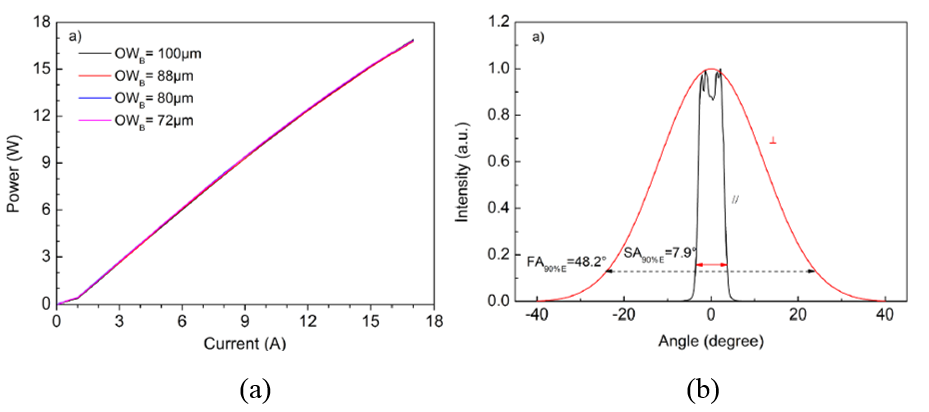As the broad-area lasers with high output power and low lateral divergence angle are highly desired for extensive scientific and industrial applications.
The operating output power and lateral divergence angle of LDs are the two main aspects expected be improved to achieve better performance and decrease the cost of laser systems.
The operating output power and lateral divergence angle of LDs are the two main aspects
Considering the epitaxial structures and waveguides play key roles in working process of the LDs, the forms of these two factors are both investigated and changed in the study process.
To improve the out-put power with a low divergence angle meanwhile, several methods are proposed and investigated by a research team of Xi’an Institute of Optics and Precision Mechanics (XIOPM) of the Chinese Academy of Sciences (CAS) which is led by Prof. Dr. Yang Guowen and Prof. Dr. Abdullah Demir of Bilken University, Turkey. The results are published on Journal of Optics and Laser Technology.
 Experimental results at 25°C a) under continuous-wave(CW) operation for a power-current curves of different back open window width(OWB) b)vertical and lateral divergence angle at 25W
Experimental results at 25°C a) under continuous-wave(CW) operation for a power-current curves of different back open window width(OWB) b)vertical and lateral divergence angle at 25W
During the research process, a flared wavefront waveguide design is introduced for reducing divergence angle. An asymmetric broad waveguide epitaxial structure is developed for low internal loss. Besides, thickness value and profiles are optimized and doped for a suitable optical confinement factor, a low resistance, high power and efficiency.
The effectiveness of the proposed method is proven by the experimental results which show that the lateral far-field divergence angle is less than 8°(90% integrated power) at 25W operating output power. This is the achieved highest single emitter output power with a low lateral divergence angle for 976nm LDs ever reported. Additionally, these devices are reliable through accelerated life test without introducing additional manufacturing complexity and cost which are very encouraging for future industrial applications.
Download: